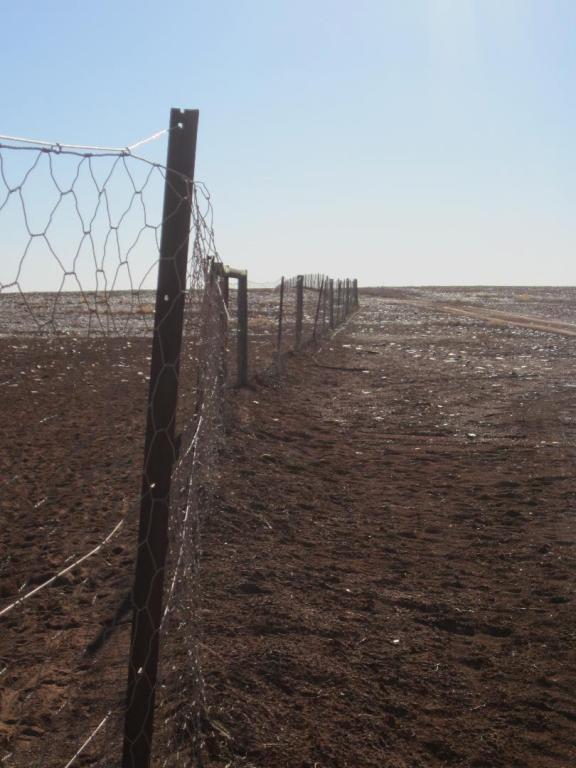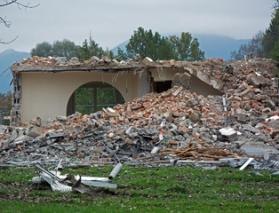
We just got back from the Outback. Of the many strange and quirky marvels we saw, the one that haunts me the most is the Dog Fence, also known as the Dingo Fence.
Dingoes are voracious predators that can wreak havoc with sheep. My son-in-law told me that one of his relatives, many generations ago, lost his entire sheep-raising business because of dingo predation. Back in the 1880s, Australians addressed the problem by building a fence clear across Australia.
The fence to keep the dingoes out is 3,488 miles long. By way of comparison, the United States of America, from sea to shining sea, is 2,680 miles long. So the dingo fence, which has quite a few twists and turns, is said to be the longest continuous structure in the world.
Longer than the Great Wall of China? That series of fortifications goes on for 13,171 miles, but that isn’t just walls, including also trenches and natural barriers of rivers and hills. There are a total of 3,889 miles of wall, but these sections are not continuous.
The Dog Fence is in Eastern Australia. In the west, there something similar: the Rabbit-Proof Fence, a mere 2,023 miles long, just under the width of America. In 1859, an English settler released 24 rabbits on his estate for hunting purposes, but within ten years, with few natural enemies (they should have gotten them together with the dingoes) and a rapid birth rate, they became like a plague of locusts, with waves in the millions devouring crops, as well as natural vegetation, which in turn caused huge erosion problems.
The Dog Fence is just a fence, made of chicken wire, folded over a couple of feet on the dingo side to keep them from digging under it. When it crosses a road–there are not that many in the Outback–it has a gate or, where we were, a large cattle-guard arrangement, with two inch bars at six inch intervals, sufficient for a human foot, but not a dingo’s paws. And the guard is as wide as a road, too far for a dingo to jump across.
The different states traversed by the fence hire “dingo fence patrol officers,” each of whom is responsible for maintaining 200 miles of fence. (Read the New York Times article about one of these officers.)
Sir Edmund Burke said that anything that approaches infinity, whether infinitely large or infinitely small, creates a sense of sublimity–awe, majesty, breath-taking wonder–the sensation evoked by the Grand Canyon, the giant red wood trees, outer space. Ruskin said that the reason we find such awe-inspiring sublimities so attractive is that infinity is a quality of God, the source of all that is good and beautiful, so that whatever seems to approach the infinite is an evocation of Him. To be sure, this is just a chicken-wire fence, but to see it go off into the distance, knowing that it extends farther than America, fills me with a sense of the sublime.
It is helped, of course, by its context. The photograph here shows just how desolate this part of Australia is. To be sure, parts of the Outback have elaborate systems of plant and animal life, despite it being among the driest places in the world, but here there are vast expanses of utter emptiness. Not far from where we were, on the dingo side, there is an area called “Moon Country,” so named because it looks like the surface of the moon. Indeed, a number of movies, wanting to create the illusion of being on some other world–such as Red Planet, a B-movie about Mars–have been filmed here. But who needs the illusions, when there are actual “other worlds” here on planet Earth?
Such vast emptiness I also find sublime. But the Dog Fence has other lessons. It is a low-tech solution to a major problem, the product of a sublime ingenuity. It is a defined border between the realm of towns, farms, and modernity and the wild. Few of us modern types could survive long in country like that. There were a total of just two roadhouses where you could buy fuel in over 300 miles, just getting to where the fence was. And this was on the dingo-free side of the fence. Running out of gasoline or having a breakdown could be fatal, as it was for many European explorers trying to cross these plains for the first time. And yet, aboriginal people live on the dingo side of the fence (as well as the other side), and they have learned to survive and thrive there, which is also sublime.
Photo by Jackquelyn Veith













